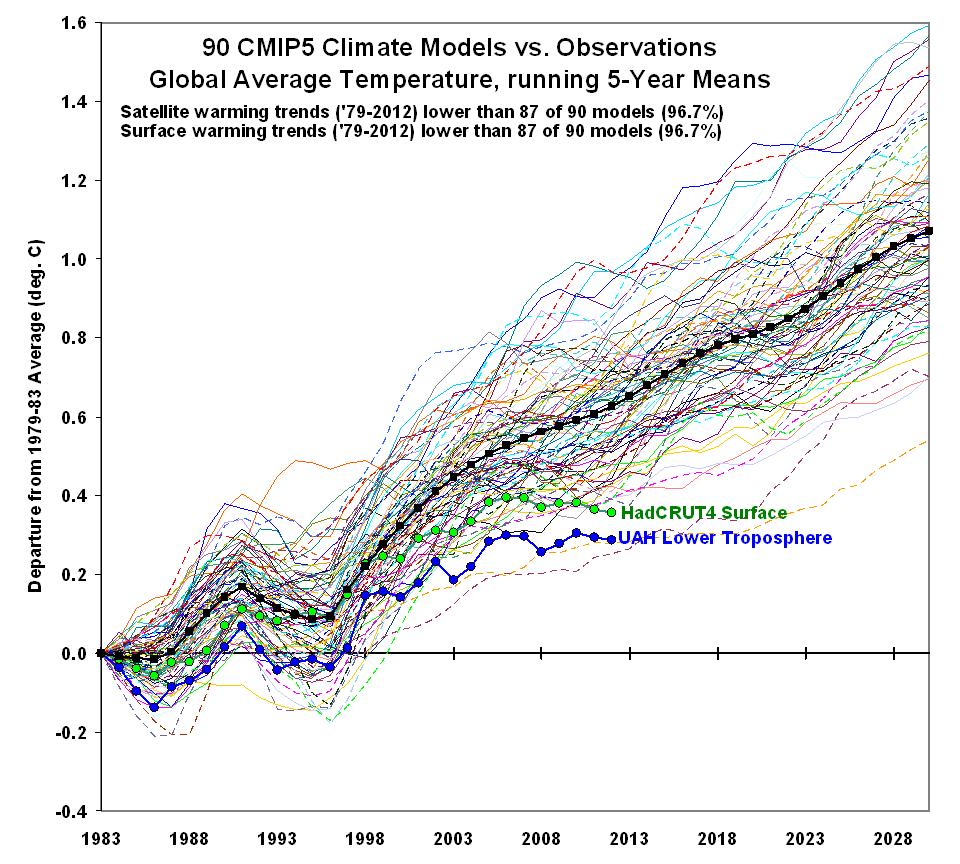I was working up some global comparisons between the CMIP5 models (provided by the KNMI Climate Explorer via John Christy) and the HadCRUT4 surface temperatures, as well as our UAH lower tropospheric temperatures.
And I think I discovered what the IPCC meant regarding 95% certainty and global warming. I’m sure it was an honest mistake on their part.
As seen in the following graphic, over the period of the satellite record (1979-2012), both the surface and satellite observations produce linear temperature trends which are below 87 of the 90 climate models used in the comparison.

So, about 95% (actually, 96.7%) of the climate models warm faster than the observations. While they said they were 95% certain that most of the warming since the 1950s was due to human greenhouse gas emissions, what they meant to say was that they are 95% sure their climate models are warming too much.
Honest mistake. Don’t you think? Maybe?

 Home/Blog
Home/Blog



